
Lot 189

ATTRIBUTED TO THOMAS POOLEY (IRISH 1646-1723) ◆
HALF LENGTH PORTRAIT OF JONATHAN SWIFT AS A STUDENT IN DUBLIN COLLEGE
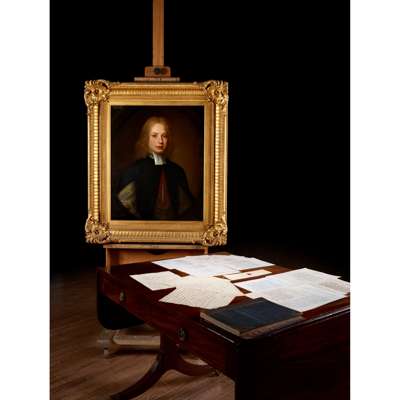
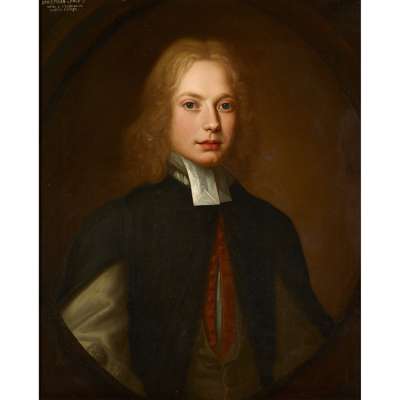
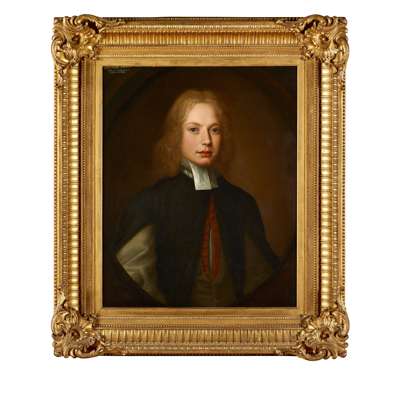
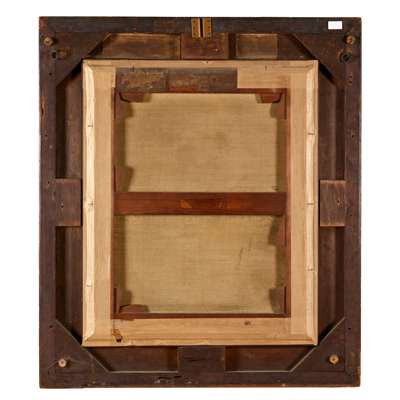
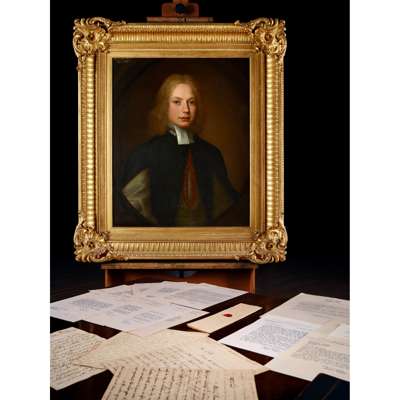
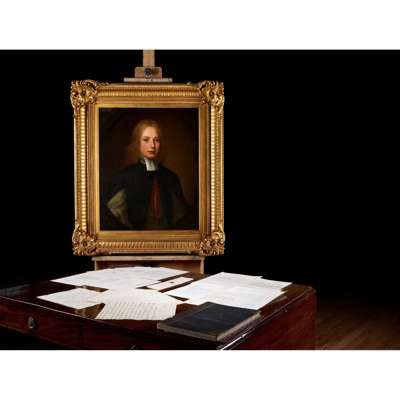


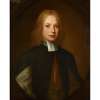
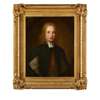

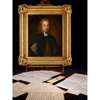
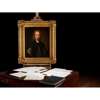
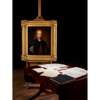
Auction: Day One: 18 May 2022 | From 11:00
Description
With later inscription, feigned oval, oil on canvas
Dimensions
71cm x 58cm (28in x 22.75in)
Provenance
Provenance (supporting documents sold with the lot):
1) Thomas Percy (1729-1811), Bishop of Dromore; acquired by him in 1801 from Anthony Trail or Traill (1755-1831) of Mount Druid, Ballycastle, later Archdeacon of Connor, who in two letters to Percy (27 April and 5 May 1801) describes his own acquisition of the work c.1790 from 'Gonne, a carver and gilder in Abbey Street', evidently the Henry Gonne (fl.1765-99) who is recorded as a carver and looking-glass seller at 26 Abbey Street, Dublin (Glin & Peill, Irish Furniture, 2007, p. 293):
‘An old family mansion house in the Co of Louth was about to be pull’d down, previous to the erection of a new one, and all the pictures in it were sent up to Dublin to be sold, as the proprietor did not chuse to be at the expence of new frames for them, and thought they would be unsuitable ornaments for a new house in their old black ones. Not chusing to sell them separately, I was oblig’d to purchase the whole in order to get three or four of them that I lik’d. The account given me of the Dean’s picture was as follows – He had been while at college an intimate companion of the young gentlemen of the above family, and frequently spent his vacations with them in the country. During one of these visits a painter was employed to paint some portraits in the family, and the Dean’s was painted along the rest, and had remain’d in the house ever since. As no particular value was set upon the picture, and as I had express’d no particular desire of purchasing it, it is improbable that such a story should have been told me, if it had not been true. I am sorry however that I have forgot the name of the family, but it has escap’d my memory.'
Thence by descent to:
2) Mr Edward Richard Meade (1805-1890) of 5 Gloucester Place, Portman Square, London, the picture with him by 1867, when exhibited at South Kensington (see below). Meade was the grandson of Thomas Percy by the marriage of Percy’s daughter Elizabeth to Pierce Meade (1776-?), Archdeacon of Dromore (John Sharpe, Peerage of the British Empire, [1833], volume I, f. 2A6 v.).
3) Miss Constance Meade (1852-1941), of 15 Eaton Terrace, Knightsbridge, London, daughter of Edward Richard Meade.
4) Mr Kenneth George Francis Balfour (1909-1998), of Quoitings, Marlow, Buckinghamshire, nephew of Constance Meade.
5) Mrs Virginia Cardwell Moore, of Coupar Angus, Perthshire.
Exhibited:
1) South Kensington Museum, Second Special Exhibition of National Portraits commencing with the Reign of William and Mary and ending the Year 1800, 1867. (Catalogue no. 139, described as 'Jonathan Swift, D.D., Dean of St Patrick's ... Bust. as a young man in student's black gown, when a student at Trin. Coll. Dublin', owner recorded as Mr. E. Meade, a copy of the catalogue with presentation plate to Meade sold with the lot, q. v.).
2) Exhibition Palace, Dublin, Exhibition of Arts, Industries and Manufactures, 1872.
3) National Library of Ireland, Fair Liberty! was all his cry: Jonathan Swift and his Contemporaries, 1999.
Published:
A Series of Historical Portraits Selected from the National Portrait Exhibitions at South Kensington: Photographed from the Original Paintings (London, [1867]) (plate 139).
The Prose Works of Jonathan Swift, D. D., edited by Temple Scott (London, 1911) (frontispiece).
Bruce Arnold, Swift: An Illustrated Life (Dublin, 1999) (cover illustration).
Literature:
David Woolley, ‘Miscellanea in Two Parts: I. An Autograph, II. A Portrait’, Swift Studies, 8 (1993), 94-99.
Jane Fenlon, ‘More about the Portrait of Jonathan Swift when a Student at Trinity College, Dublin’, Swift Studies, 15 (2000), pp. 33-38.
David Woolley, ‘A Rejoinder from the Author of The Doubtful Portrait, etc.’, Swift Studies, 15 (2000), pp. 39-41.
Joseph McMinn, Jonathan Swift and the Arts (Newark, DL: University of Delaware Press, 2010), p. 168 n. 7.
Supporting documents:
Full information available on request.
Footnote
Note: The earliest supposed likeness of one of the greatest writers in English, and the embodiment of the elusiveness or otherwise of the historical Swift, this remarkable portrait comes to market by direct descent from Thomas Percy, Bishop of Dromore, who acquired it in 1801 as ‘a small portrait of Dean Swift’, and is now offered for sale for the first time in 200 years, with documented provenance to the late 18th century.
First exhibited at South Kensington in 1867, for the next century it drifted in and out of public view. In 1898 Leslie Stephen, writing in the Dictionary of National Biography, declared that ‘the present whereabouts of this portrait is unknown’. It reappeared c.1967 in the collection of a descendant of Percy’s and came to the attention of Swift scholars, at which point there first emerged an attribution to Thomas Pooley which is now current: ‘A portrait thought to be of the young Jonathan Swift, c.1682, is clear and direct in Pooley's early manner. The attribution is probable because the Pooley family married into the Swift family’ (Dictionary of Irish Biography).
The attribution to Pooley, and the longstanding identification of Swift as the subject, were on the occasion of the portrait’s exhibition at the National Library of Ireland in 1999 advanced by Bruce Arnold in support of the theory that Swift was in fact the illegitimate son of his benefactor Sir John Temple (1600-1677), master of the rolls in Ireland, and hence a more likely candidate for such a sumptuous likeness. Originally developed by Denis Johnston (In Search of Swift, 1959), this theory has been used to explain otherwise intractable ambiguities in Swift’s relationships with the two most important women in his life, firstly ‘Stella’ (Esther Johnson), who on this view is supposed to have been the daughter of William Temple and therefore Swift’s niece, and ‘Vanessa’ (Hester Vanhomrigh).
Writing in 1993, David Woolley (q.v.), editor of The Correspondence of Jonathan Swift (5 vols, 1999-2014), presented several arguments against Swift’s being the subject of the portrait, chiefly that ‘The dress style is of c.1710. By this time, however, Swift was into his forties’, and that ‘The portrait style is of the school of Kneller. When Swift graduated, in the reign of James II, the dominant portrait style was still of the school of Sir Peter Lely’.
In 2000, art historian Jane Fenlon noted that Woolley had only seen the painting in reproduction, that his analysis contained no reference to the attribution to Thomas Pooley, who had various connections to Swift, and that the sitter’s costume is similar to known examples of academic dress from the late 17th century:
‘The portrait in question has a long-standing attribution to the painter Thomas Pooley. The attribution is sound in that the style and manner of painting compare well with other portraits by the artist. The age of the sitter, between fifteen and nineteen years, is appropriate for the years 1682-86, the time spent by Jonathan Swift at Trinity College, Dublin. The costume worn by the sitter would also seem to be appropriate to the period in question. Social and familial links have been established between the painter and the sitter. In art-historical terms, after such close examination of the evidence, a portrait with a long-standing provenance and attribution such as this one has a sound basis for acceptance’.
In a brief response to Fenlon’s article (published in the same volume of Swift Studies) Woolley reiterated a few of his original arguments while conceding the strength of ‘the Pooley connection’.
‘His life and works continue to vex as well as instruct and amuse his readers … Rumours and legends about Swift's parentage, alleged marriage, misanthropy, and madness started early and developed freely, not least during the Victorian period … His work has provoked strong responses from each generation of readers, and he is one of those writers whose effect on our minds and imagination will not go away. In the words of a fellow Irishman, who also believed that Swift was the founding figure in Irish political nationalism, “Swift haunts me; he is always just around the next corner” (W. B. Yeats)’ (Clive Probyn in ODNB)













